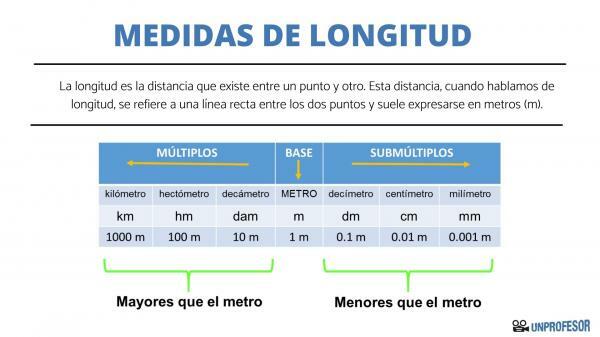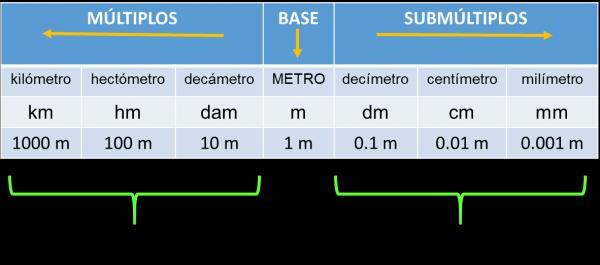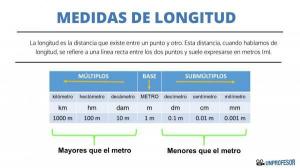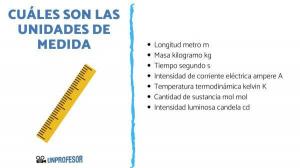LENGTH measurements for Primary

Welcome once again to another lesson from a Teacher. On this occasion, we are pleased to present you with a very entertaining topic that will be useful not only at school, but also in your day-to-day life, since we use the lengths on a daily basis. Within this lesson on length measurements for Primary You will find a brief theoretical description of the topic and also some examples and diagrams that will help you better understand the lesson.
In the theoretical part we are going to see the length concept, we will also see what are the length units of measure (multiples and submultiples) and you will see some examples schematic so that you can visualize it more easily. Within these examples we will also leave you a table or a table that will help you with the conversion of the different units of measurement of length, both in multiples and in submultiples.
Before knowing the length measurements for Primary, let's know the definition of length. Length basically refers to the distance between one point and another.
This distance, when we speak of length, refers to a straight line between the two points already mentioned. Also, as we discussed in the introduction, the length has different units of measure. However, the main and most widely used unit for measuring length is the meter (m).However, the meter is not the only unit of measurement for length. There are several measurements that vary according to the scale or size of the distance that we want to measure. These different measurements can be multiples (greater than the meter) or submultiples (less than the meter). We will explain this in more depth in the next section. Next we will see these units and how each one is different.
Here we will discover the length measurements that exist taking into account the different units.
Submultiples (less than the meter)
- Decimeter (dm)
- Centimeter (cm)
- Millimeter (mm)
Multiples (greater than the meter)
- Kilometer (Km)
- Hectometer (hm)
- Decameter (dam)
Note: do not confuse decimeter with decameter. They are distinguished because in the hectometer, in its abbreviated form, an “a” is added between the “d” and the “m”.

Now, having seen the above, one of the most important things in this lesson is learn to move from one measure of length to another. This operation is performed by division or multiplication; depending on whether we want to convert a multiple into a submultiple or vice versa.
So that you can more easily appreciate this conversion or equivalence, we are going to perform this demonstration by middle of a table and then, we will explain each case, with its respective example, so that the lesson is more complete.
Table of equivalences of units of length
In the table that accompanies this section we can see the equivalence of each unit with respect to the main unit which is the meter (m). For units of multiples (greater than the meter) we must multiply by 10 in each of the scales and increase. The opposite for the units of submultiples (less than the meter), where we must divide by 10 and increase as can be seen in the table.
For example, if we want to know how much 1 meter is in decimeters, we must multiply them by 10; so 1 m = 10 dm. If we want to know how much 1 meter is in centimeters, we have to multiply by 100; so 1 m = 100 cm. Finally, the equivalence of 1 meter in millimeters, we must multiply by 1000. Therefore 1 m = 1000 mm.
On the contrary, in the case of multiples, we must do the opposite operation; that is, divide the unit of meter. So, if we want to know how much 1 meter is in decimeters, we have to divide by 10; so 1 m = 0.1 dam. Likewise, if we want to know how much 1 meter is in hectometres, we have to divide by 100; so it would be 1 m = 0.01 hm. And finally, if we want to know the equivalence of 1 meter in kilometers, we have to divide by 1000. So 1 m = 0.001 km.
This table that we have left you here, can help you to visualize what are the multiples and what are the submultiples and little by little to pick up the pace. The more you practice, the easier it will be to convert the units of length with respect to the meter. Likewise, as we always do from A Teacher, we encourage you to continue practicing this topic regarding the units of measurement of length and any other lesson in which you have any doubts. You can consult our website and there you will find different lessons and topics, as well as practical examples and printable exercises.




